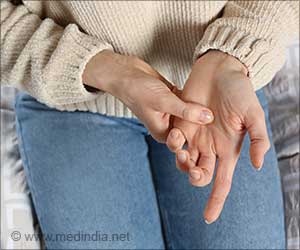- Robotics in Physical Rehabilitation: Systematic Review - (https://www.mdpi.com/2227-9032/12/17/1720)
About
Rehabilitation technology is undergoing a transformative evolution driven by cutting-edge innovation in robotics, virtual reality (VR) and artificial intelligence (AI).
These advancements reshape traditional rehabilitation practices, improve patient outcomes, and offer new hope to individuals recovering from injuries, surgeries or neurological conditions. Approximately 15% of the global population over 1 billion people live with some form of disability.
Disabilities are the result of stroke, traumatic craniocerebral injuries, neurological conditions and degenerative diseases, severely affecting people’s ability to perform essential daily activities such as walking, bathing, eating and dressing. This reduces their independence and quality of life.
The increasing prevalence of motor disabilities, accompanied by an aging population in most countries increases the need for a better rehabilitation system.
Motor rehabilitation aims to restore and improve the motor functions of patients through specific exercises, physical therapy and advanced technology such as robotic systems(1✔ ✔Trusted Source
Robotics in Physical Rehabilitation: Systematic Review
Go to source).
Motor rehabilitation stimulates neuroplasticity, the brain’s ability to recognize and form new neural connections in response to learning and experience. Repeated and controlled therapies facilitate the relearning of lost motor skills and contribute to functional recovery after injuries to the nervous system.
Advances in robotics and artificial intelligence have opened new perspectives for motor rehabilitation, offering hopes for more effective and personalized treatments.
Robotics in Rehabilitation: Enhancing Strength, Coordination, and Motor Control
Robotics in rehabilitation provides automated, repetitive movements that are crucial for rebuilding strength and motor control. Robotic devices such as exoskeletons and robotic arms improve physical therapy by delivering precise movements personalized to each patient’s needs. Robotic systems improve strength, coordination and skill, enabling patients to perform daily activities.
One notable example is the robotic gait trainer, which helps stroke and spinal cord injury patients relearn walking patterns. It is known that patients using robotic-assisted gait training experience faster improvements in walking speed and endurance compared to traditional therapy. Another innovation is a robotic glove designed to improve hand function in individuals with paralysis enabling more effective grip and release movements.
Virtual Reality in Rehabilitation: Immersive Therapy for Improved Recovery
Virtual reality (VR) offers dynamic and engaging environments that encourage active participation in therapy. Unlike conventional methods, VR-based rehabilitation immerses patients in stimulated real-world tasks, making exercise enjoyable while enhancing neuroplasticity.
A case study conducted at the University of Southern California highlighted the effectiveness of VR in balance training for older adults. The program combined VR tasks with motion-tracking technology, significantly improving balance, reaction time and confidence in navigated real-life situations. A leading VR rehabilitation platform helps stroke survivors recover motor and cognitive functions through interactive, gamified experiences.
Artificial Intelligence: Personalized and Data-Driven Care
AI is revolutionizing rehabilitation by analyzing large volumes of patient data to optimize therapy plans. Machine learning models predict recovery paths, enabling therapists to design highly individualized programs. AI-powered wearable devices continuously monitor patient movements providing real-time feedback that helps refine therapy techniques.
Did You Know?
Soft robotic exosuits are helping stroke survivors walk better, reducing recovery time and improving gait symmetry. #rehabilitationtech #strokesurvivor #softrobotics #medindia
One system uses AI to assess patient progress and adapt therapy programs accordingly to improve efficiency and outcomes. Another breakthrough system integrates AI with a soft robotic exosuit or soft wearable robot to assist with walking exercises for stroke survivors improving gait symmetry and reducing recovery time.

Tackling Challenges in Tech-Enhanced Rehabilitation
Despite its promise, integrating advanced technology into rehabilitation presents challenges. High equipment costs, limited accessibility to resource-inhibited settings and the need for specialized training hinder widespread adoption. Ethical considerations regarding AI usage and data security require keen attention.
To address these barriers, future efforts must prioritize affordability, regulatory standardization and clinician training programs. Expanding tele-rehabilitation, powered by AI and VR technologies, offers a promising solution for extending access to care in rural and under served communities. Collaborative research and industry partnerships will be key to driving innovation and inclusivity.
Rehabilitation plays a vital role in maintaining mobility and overall health, preventing the progression of debilitating conditions. Advances in robotics, virtual reality, and artificial intelligence offer unprecedented opportunities for effective, personalized, and engaging rehabilitation.
With continued technological evolution, the future of rehabilitation holds the promise of improved outcomes, greater accessibility, and enhanced quality of life for patients worldwide.









